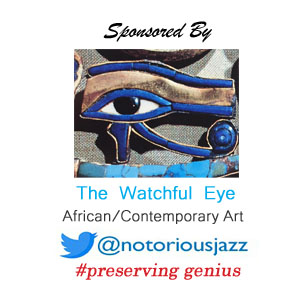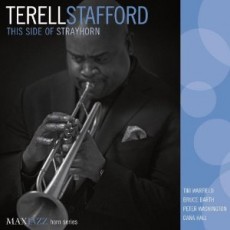
Daily Dose Of Jazz…
Terell Stafford was born in Miami, Florida on November 25, 1966 and raised in Chicago, Illinois and Silver Spring, Maryland. He went on to get a degree in music education from University of Maryland in 1988 branching out from classical trumpet to jazz with their jazz band. He went on to obtain a degree in classical trumpet performance from Rutgers University.
His career in jazz soon picked up and has played with McCoy Tyner, Shirley Scott, Christian McBride, John Clayton, Steve Turre, Stephen Scott, Bobby Watson, Dave Valentin, Lafayette Harris, Cecil Brooks III, Cornell Dupree, Ed Wiley, Victor Lewis, Melissa Walker, Herbie Mann and Russell Malone among others. He has graced the stages such as Carnegie Hall and The Tonight Show.
Stafford’s educator hat has him as the Director of Jazz Studies at Temple University and has also worked with the Juilliard School’s jazz program, at the Lincoln Center’s Essentially Ellington program, and with the 2006 All-Alaska Jazz Band. He has recorded eight albums to date and continues to perform and tour.
More Posts: trumpet
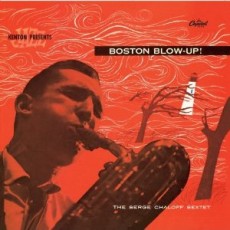
Daily Dose Of Jazz…
Serge Chaloff was born on November 24, 1923 in Boston, Massachusetts to noted piano teachers, Margaret and Julius. He was among the few major jazz performers on his instrument, and until his arrival on the jazz scene the only prominent baritone player was Harry Carney of the Duke Ellington Orchestra.
Originally influenced by Charlie Parker, Serge became the first major bebop baritone saxophonist, opening the way for others to follow. He first became well known as one of the “Four Brothers” reed section in Woody Herman’s Second Herd. He also played with Boyd Raeburn, Georgie Auld, Jimmy Dorsey and Count Basie.
Recording as a leader Chaloff produced five records working with Stan Kenton, Sonny Clark, Leroy Vinnegar, Philly Joe Jones and the metronome All-Stars, however, his career was greatly limited by addiction to heroin. After successfully giving up drugs, baritone saxophonist Serge Chaloff developed cancer of the spine which caused his early death on July 16, 1957 at he young age of 33.
More Posts: saxophone
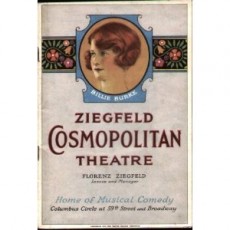
From Broadway To 52nd Street
It was just seven days before the panic began leading to the crash an ambitious new musical appeared on October 17, 1929 on the stage of the Cosmopolitan Theatre by the title of Great Day. Music composed by Billy Rose and Vincent Youmans,however the show only experienced a run of only thirty-six performances due to the Crash, one good thing came out of the experience is the composition More Than You Know that went on to become a jazz standard.
The Story: Set in Louisiana on the Randolph Plantation, the Spanish Casino, the Mississippi river and the Levee.
Broadway History: By 1929 as the Roaring Twenties was coming to a close, the country was still reeling in widespread euphoria during this period of peace and great prosperity fueled by increased industrialization and new technologies, such as the radio, the automobile, even had air flight becoming widespread. Millionaires were made overnight as they mortgaged homes and sank life savings into hot stocks like Ford and RCA. Little did they know what lied beneath the horizon. The Fed had raised interest rates several times to cool down the overheated stock market and on October 24th panic selling occurred as investors realized the stock boom had been an over-inflated bubble. Millionaire margin investors were decimated and became bankrupt immediately as the stock market crashed on October 28th and 29th.
At the end of 1929, sixteen billion dollars had been shaved off stock capitalization, 140 billion of depositor money disappeared and 10,000 banks failed ushering in the Great Depression that would last till the mid 1930’s. Though the country would suffer financially, Broadway still mounted plays and entertained audiences.
Sponsored By
www.whatissuitetabu.com
More Posts: broadway
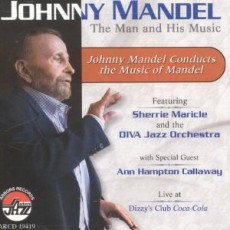
Daily Dose Of Jazz…
Johnny Mandel was born John Alfred Mandel on November 23, 1925 in New York, New York. His mother, an opera singer, discovered he had perfect pitch at age five. Piano lessons ensued but Johnny switched to the trumpet and later the trombone.
Johnny studied at the Manhattan School of Music and the Julliard School. By 1943 he was playing trumpet with Joe Venuti, in 1944 with Billy Rogers and then trombone in the bands of Boyd Raeburn, Jimmy Dorsey, Buddy Rich, George Auld and Chubby Jackson. In 1949 he accompanied singer June Christy in the Bob Cooper Orchestra, then with Elliot Lawrence’s outfit, followed by a stint with Count Basie and a move to Los Angeles, California to play with Zoot Sims.
In the late Forties and into the Fifties he wrote jazz compositions like “Not Really the Blues” for Woody Herman, “Hershey Bar” and “Pot Luck” for Stan Getz, “Straight Life” and “Low Life” for Count Basie as well as “Tommyhawk” for Chet Baker. Mandel composed, conducted and arranged the music for numerous movie sound tracks with his earliest credited contribution to “I Want To Live” in 1958 being nominated for a Grammy. Mandel’s most famous compositions include “Suicide Is Painless” from M*A*S*H, “Close Enough for Love”, “Emily”, “A Time for Love”, and “The Shadow Of Your Smile” which won an Oscar for Best Song and a Grammy for Song Of The Year in 1966.
Mandel is a recipient of the 2011 NEA Jazz Masters Award, has won several Grammy Awards for Best Instrumental Arrangements Accompanying Vocals for Quincy Jones’ Velas, Natalie & Nat King Cole’s Unforgettable and Shirley Horn’s Here’s To Life. He has composed music with lyricists Alan & Marilyn Bergman, Paul Williams and Johnny Mercer; and arranged for Frank Sinatra, Tony Bennett, Barbra Streisand, Diana Krall, The Diva Jazz Orchestra and Ann Hampton Calloway among numerous others.
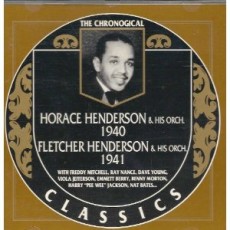
Daily Dose Of Jazz…
Horace W. Henderson, the younger brother of Fletcher Henderson, was born on November 22, 1904 in Cuthbert, Georgia. He attended Wilberforce University and played in the “Collegians” band that included Benny Carter and Rex Stewart. This band would later be known as the Horace Henderson Orchestra and then as the Dixie Stompers.
Henderson left the band to work with Sammy Stewart, then in 1928 organized a new band called the Collegians and in 1931 Don Redman took over this band. Henderson continued to work as the band’s pianist and arranger before leaving to work for his brother.
He arranged for many of the most important jazz musicians of the era, such as Charlie Barnet, the Casa Loma Orchestra, Tommy Dorsey, Benny Goodman, Earl Hines, Jimmie Lunceford and also for his brother. Although Horace worked continually, led bands, arranged, recorded, and composed into the 1980s without the popularity of his older sibling, he is considered by many the more talented and skillful of the Henderson brothers.
His best-known arrangements are of his own “Hot and Anxious” which later became “In The Mood”, “Christopher Columbus” and “Big John Special”. At different times in his career, Horace was pianist and musical director for both Lena Horne and Billie Holiday.
Jazz pianist, organist, arranger and bandleader Horace Henderson passed away on August 29, 1988 at the age of 83.
More Posts: piano


